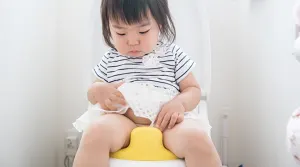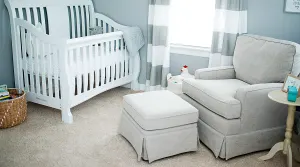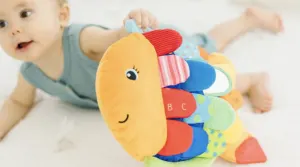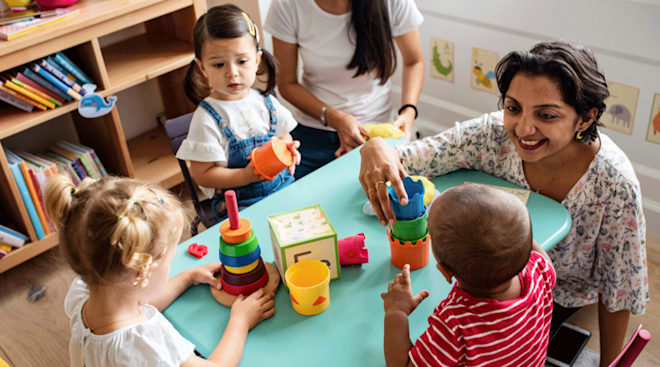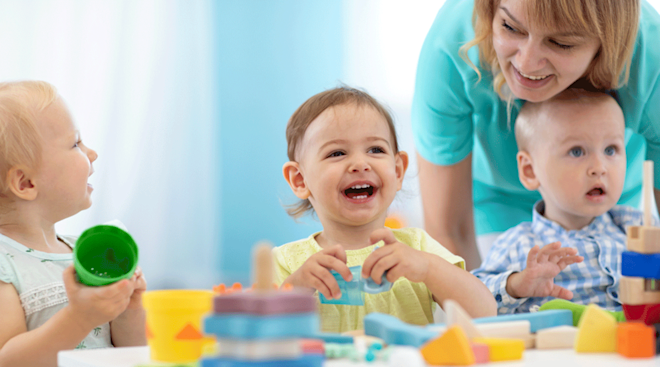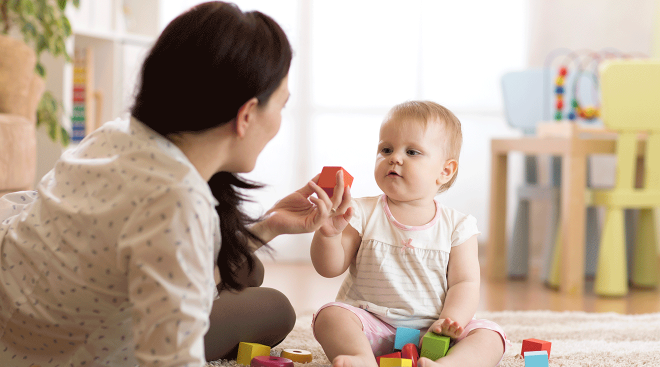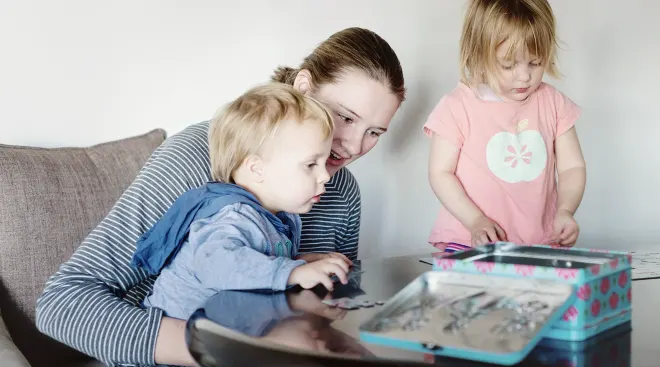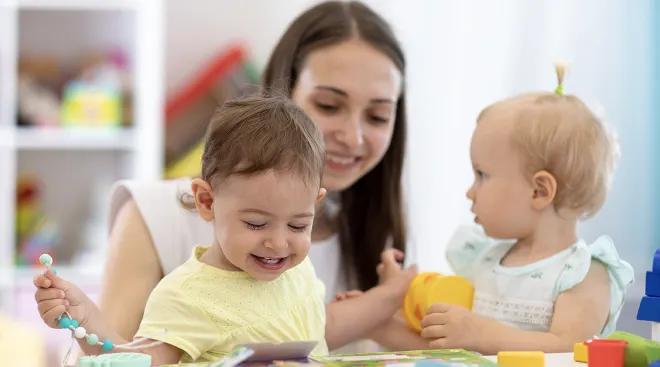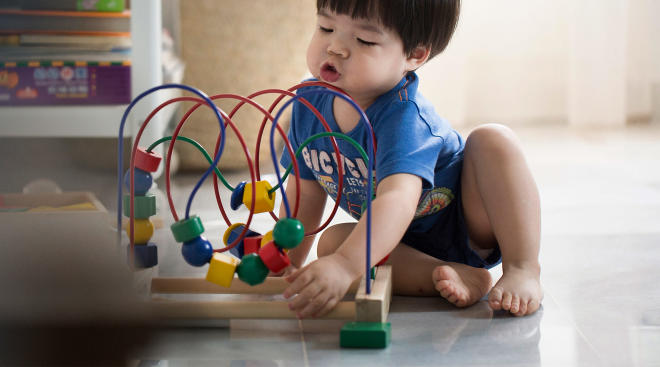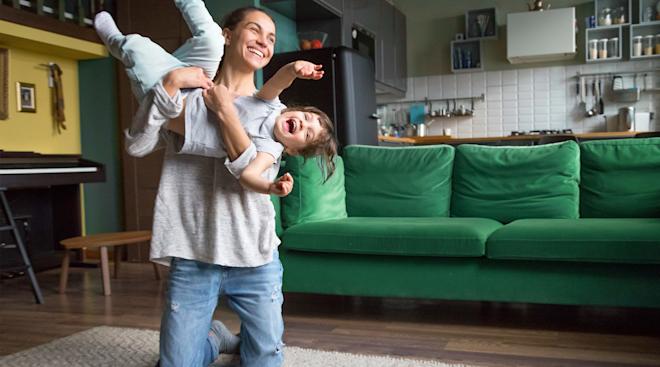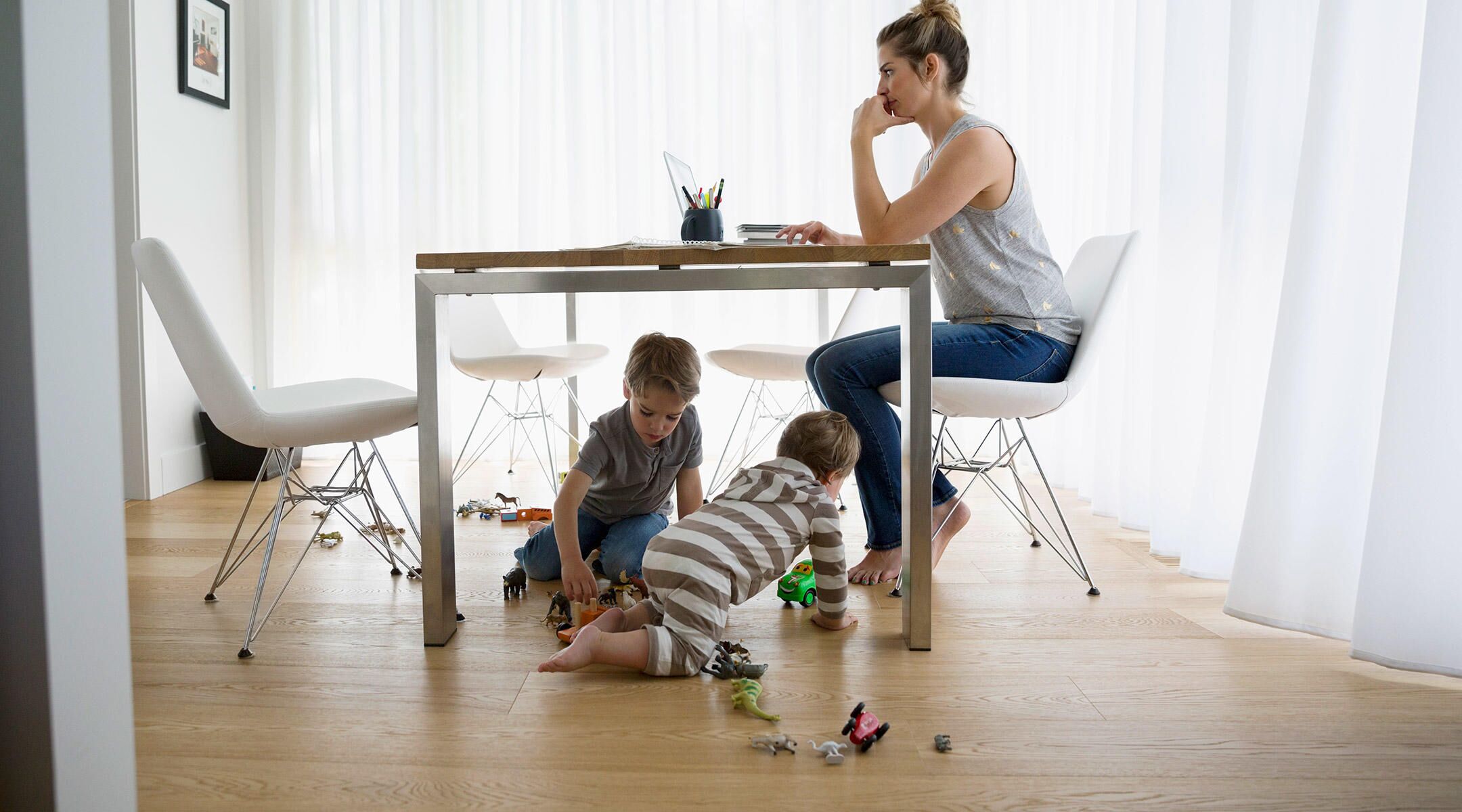7 Ways to Establish Trust With Baby’s Caregiver, According to Parents
Finding a caregiver for baby can be quite the challenge—but figuring out how to trust them and build a positive relationship can be even harder. Luckily, there are ways to build a healthy and trusting relationship, and it starts with clear communication from the beginning. In fact, experts say communication is the key to establishing mutual respect. Here, tips and tricks on how to trust baby’s caregiver and build a mutually respectful relationship.
When hiring a caregiver, don’t underestimate the importance of references. “Professional references for individual providers and online reviews for center-based staff can shed a lot of light,” says Amy Jackson, chief early learning strategy officer at Primrose Schools.
Tapping previous families a caregiver has worked with can also be useful, adds Lynn Perkins, CEO and co-founder of UrbanSitter. In fact, Rachel Mitchell, a pediatric sleep specialist and former night nanny, cites community resources as crucial when looking for caregivers you can trust. “As a mom of seven and former night nanny, I’ve definitely learned about the importance of establishing a trusting relationship as both a parent and a caregiver… Most of the parents I was hired by were direct referrals from other parents. They felt more comfortable hiring someone that friends or family had used in the past and were able to share their experience with them directly,” she says. “As a parent, this is typically the route we have taken when finding care for our children as well.”
Once you have a caregiver, those same people can continue to be a resource as you build your relationship, particularly if you’re feeling any guilt (more on that later). “Connecting with other parents who’ve been through this can be so helpful. Sometimes, just knowing you’re not the only one feeling this way is a game-changer,” Perkins notes.
One of the best ways to start establishing trust early on is by doing a thorough interview. “Plan for enough time and think through a list of questions beforehand to ensure you have as much information as possible to inform your decision,” Jackson says. “Consider a range of topics, including experience, training and caregiving philosophy.” You’ll want to cover the basics, including their experience with kids your child’s age, how they handle discipline and challenging behavior, their credentials and how they respond in an emergency situation. “Ask them to describe a tough situation they’ve handled before and how they resolved it,” Perkins adds. “It’s one of the quickest ways to get a feel for their problem-solving skills and how calm they stay under pressure.”
As part of the interview, set aside time to see how the caregiver interacts with your child when you’re not present for a short period of time. “This can give you a sense of how they handle different situations and whether they’re a good fit for your family,” Jackson says. Perkins agrees, noting this interaction can tell you a lot about their patience, creativity and energy levels. It can also help you assess if their personality is a good fit for your kiddo. “For example, if you have a very active child, finding a caregiver who is high energy and likes to be active would be a priority,” Perkins says.
As part of the interview process, it’s also important to clearly communicate your expectations for the role—and the earlier you do this the better. “I’d start with a very detailed job description,” Perkins suggests. “You’ll save yourself time and focus on more suitable candidates if you’re clear about expectations upfront.” If you expect them to do laundry while baby naps, communicate that directive, advises Mitchell.
Furthermore, both experts suggest reiterating these expectations during the interview and even as they settle into the role. “Plan on having a couple of check-ins during those first few weeks—it’s much easier to make adjustments before little issues become big ones,” Perkins says. “Talk through things like house rules, routines and your preferred way to communicate to help everyone feel more confident.” She also suggests having a shared digital calendar that tracks everyone’s activities and schedules to help with this.
Finally, discuss the emergency situations in which you would want them to call you. “Clearly communicating your expectations for how the caregiver will handle things if something goes wrong will put you both at ease,” Perkins says.
A big part of building trust is getting to know baby’s caregiver—and yourself. Pay attention to how you feel around them. “I always tell parents to trust their gut. Pay attention to how comfortable you feel during interviews and early interactions,” advises Jackson. “Depending on your arrangement, it may also make sense to invite prospective or new caregivers to join your family for dinner or some outing to get to know them better—and don’t leave your child out.” If your kiddo is old enough to express their thoughts and feelings about their caregiver, take it seriously, Jackson adds. Plus, ask yourself what qualities you’ve noticed—are they communicative? Consistent? Do they feel comfortable asking and answering challenging questions?
Along with assessing the caregiver’s personality, you’ll also want to assess your own. “‘Know thyself’ is a good rule for all of us, especially parents,” Jackson explains. “Greater self-awareness can help you understand and communicate your unique parenting style, as well as address any anxieties or biases you may have.” While it’s okay to feel anxious, be honest about your anxieties and perhaps even address them with baby’s caregiver, Perkins says, adding, “Open communication is everything.”
Once you’ve established a clear set of expectations, have regular check-ins. “Set aside time, every few weeks or once a quarter, for you and the caregiver to talk about how things are going. Preferably do this when your child will not be taking either of your attention,” Perkins says. This is a great time to give your caregiver any feedback on changes they should make to better accommodate you or your child. It’s also a great time for you to let them offer any feedback they might have. “Encourage them to speak up if something isn’t working,” Perkins explains. “It’s better to hear about little issues before they become big ones.”
Beyond this, the rest is about maintaining the relationship, Jackson says. “Showing genuine appreciation for the work they do to help your family is key in building trust and establishing an open dialogue.”
It can be completely normal to feel guilty about having a caregiver for baby. But while you shouldn’t chastise yourself for having these feelings, it’s important to reframe them. “Caregivers are there to support you, not replace you,” Perkins says. “Asking for help doesn’t make you any less of a parent. Finding a caregiver who is right for your child shows how much you care about your child’s wellbeing.” Instead of guilting yourself for the time you’re spending away from your kiddo, focus on the time you do get to spend with them and stay present in those moments.
For older kids, having a caregiver who shares their interests and favorite pastimes can also help ease feelings of guilt. “Knowing that your child is spending time reading, doing art projects, playing soccer or whatever it is that they love helps,” Perkins says, adding that having “a diverse network of loving adults in your child’s life can be a huge benefit. It helps them build social skills, adaptability and a broader support system.”
“Micromanaging can be stressful for everyone, and it’s one of the top reasons babysitters and nannies cite for quitting,” Jackson says. A good way to alleviate micromanaging is with appropriate training. Show them your child’s routine and cover all the responsibilities they’ll have. “There’s less micromanaging necessary when the responsibilities and role are clearly defined,” Perkins says.
It’s also important to take a look at the bigger picture. If your child is safe, growing, healthy, happy and thriving then everything else is secondary. It’s important not to “sweat the small stuff,” Perkins says. “Make sure they know you’re open to talking through any issues, but try to give them space to shine…Caregivers bring their own skills and experiences to the table—that can be a huge advantage if you’re open to it.”
In fact, remaining flexible in these situations can even help build your relationship, as it shows you trust them and their experience. As Jackson says, “The reality is: every child will eventually encounter many different styles and personalities, and flexibility and collaboration among parents and caregivers can lead to the best experiences and outcomes.”
Frequently Asked Questions
Should I have a nanny cam?
“Think about whether having a nanny cam will truly make you feel better or if it will cause more stress,” Perkins says. “Weigh the pros and cons of trust versus surveillance.” If you do think having a nanny cam will put you at ease, make sure you transparently communicate it to your caregiver—and also consider all the legality surrounding recording someone in your home.
What should I do if I feel my caregiver isn’t a good fit?
If anything feels off, trust that feeling and look into it seriously. “Parental intuition is very real,” Jackson says. Depending on the circumstances, have an honest conversation with baby’s caregiver on what isn’t working for you and see if there are improvements that can be made. “Documenting concerns, even just in your phone notes, can help you have a clear, fair conversation if you need to address something,” Perkins says. But if there are serious concerns regarding baby’s safety or trust, don’t hesitate to let them go and find someone more suitable. Your child’s safety and well-being come first.
Will baby feel my absence when they’re with a caregiver?
While babies can sense your absence, they’ll adjust quickly as long as they have consistent love and care from their caregivers. “Encourage caregivers to use nurturing techniques that help baby feel safe and happy,” Perkins says. “Be sure to share any special soothing techniques or toys (like a lovey) with your caregiver before they begin the job.” Having a goodbye ritual, such as a hug or a song, can also help your little one adjust to transitions too, she adds.
At what age should I put baby in a childcare setting?
Because each family’s needs are so unique, there’s no recommended age to put kids into a daycare or childcare program. There are some centers that provide childcare for babies as young as 8 weeks old, Jackson says. Perkins cites 6 to 24 months as a good age range because it helps kids learn how to socialize. Ultimately, though, it’ll depend on what works best for your family. “Talk to your pediatrician and consider your child’s developmental milestones,” Perkins adds. “Don’t overlook the fact that finding the right daycare is as important as the timing, so don’t rush the process.”
Where can I find good childcare?
A good place to find good childcare is within your own network. Ask friends and family for their recommendations, and then do your own research by reading reviews and asking questions. Then, conduct in-person visits and interviews to ensure your childcare setting or chosen provider is a good fit. “No matter where you find your new childcare solution, be sure to do the proper due diligence before committing,” Perkins says.
Plus, more from The Bump:
Amy Jackson, PhD, is the chief early learning strategy officer at Primrose Schools. She holds a doctorate in instructional leadership from Georgetown University, a master’s in curriculum from the University of Georgia, an MBA from the University of Virginia Darden School of Business and a bachelor’s in early childhood education from Nova Southeastern University.
Rachel Mitchell is a certified maternity and pediatric sleep specialist, founder of My Sweet Sleeper, a former night nanny and mom of seven. She has been working with families all over the world for over 10 years, helping them implement practical tips and approaches with their children to help them get better sleep. She earned her maternity and infant sleep certification from International Maternity Institute in 2013.
Lynn Perkins is the CEO and co-founder of UrbanSitter. She started the website in 2014 after she found herself and her community struggling to find high-quality childcare they could trust. She earned her bachelor’s degree from Stanford University.
Learn how we ensure the accuracy of our content through our editorial and medical review process.
Navigate forward to interact with the calendar and select a date. Press the question mark key to get the keyboard shortcuts for changing dates.







